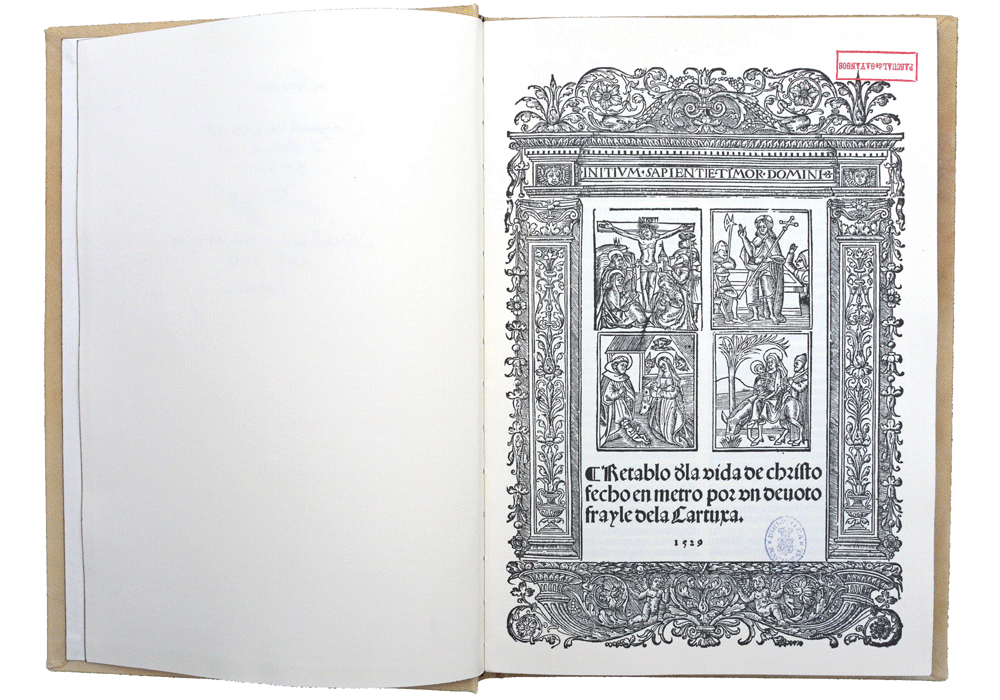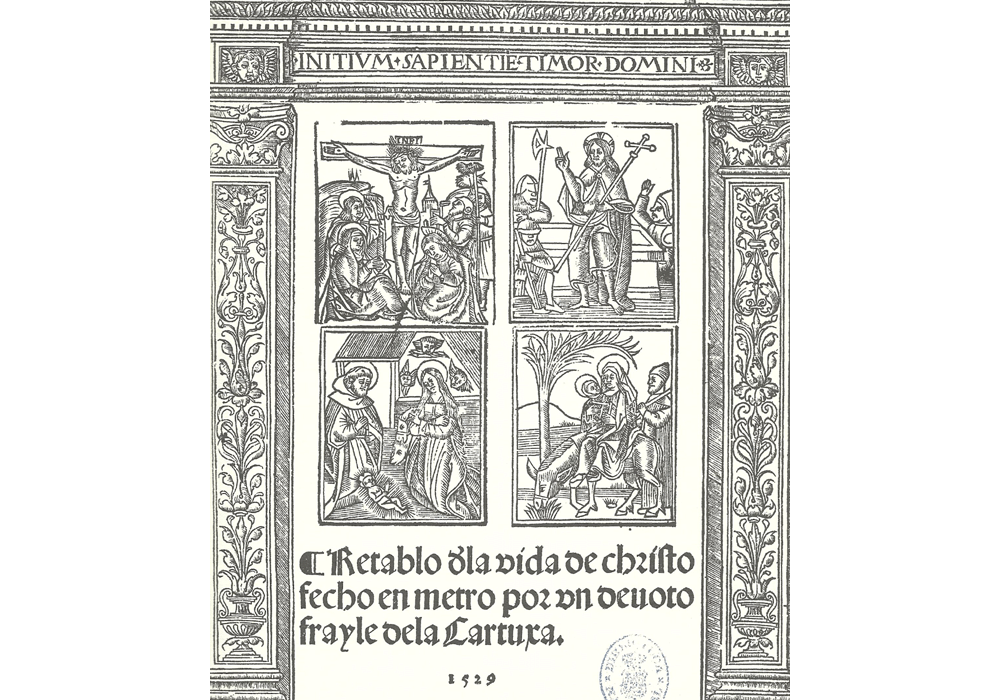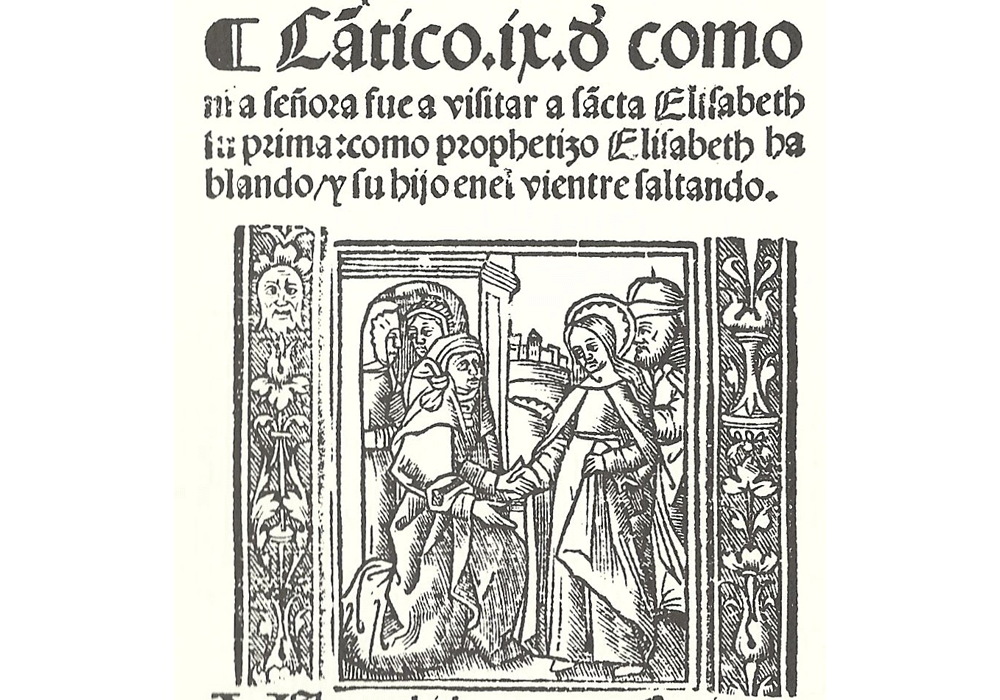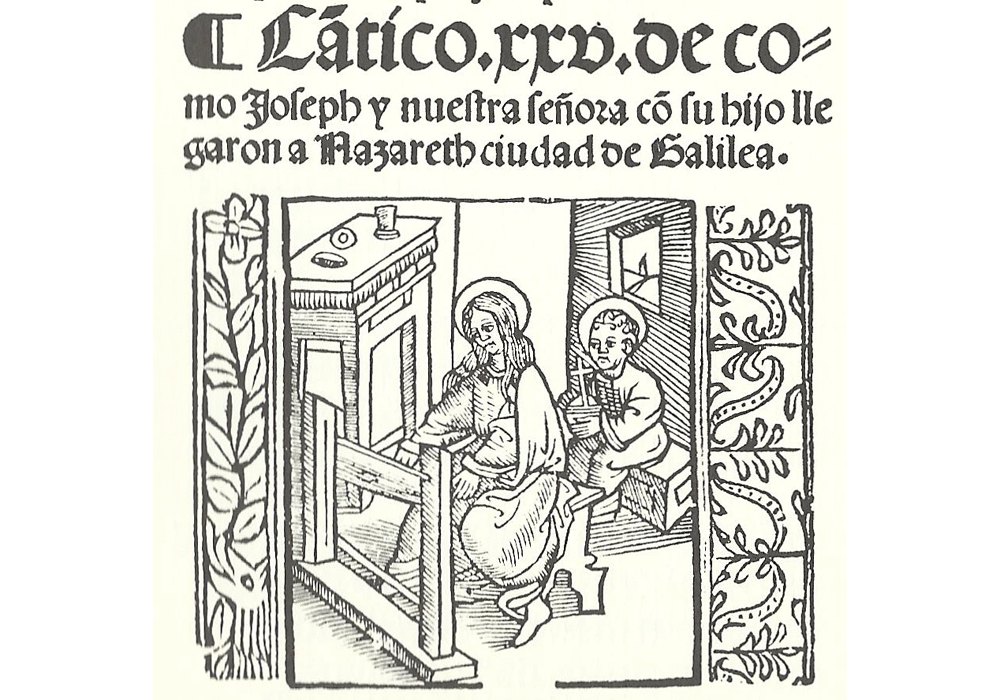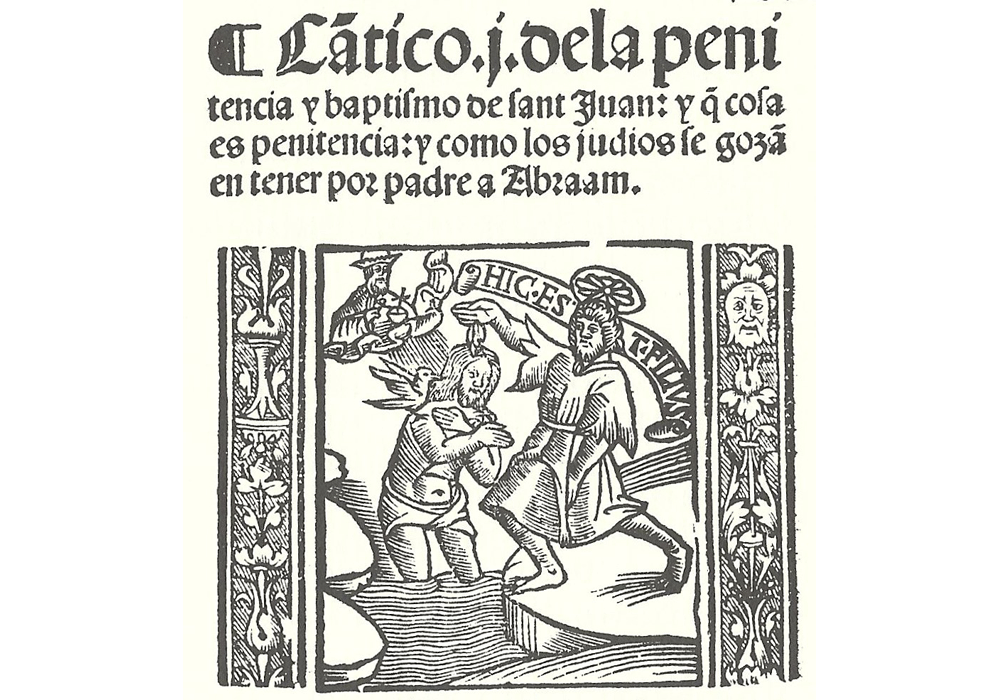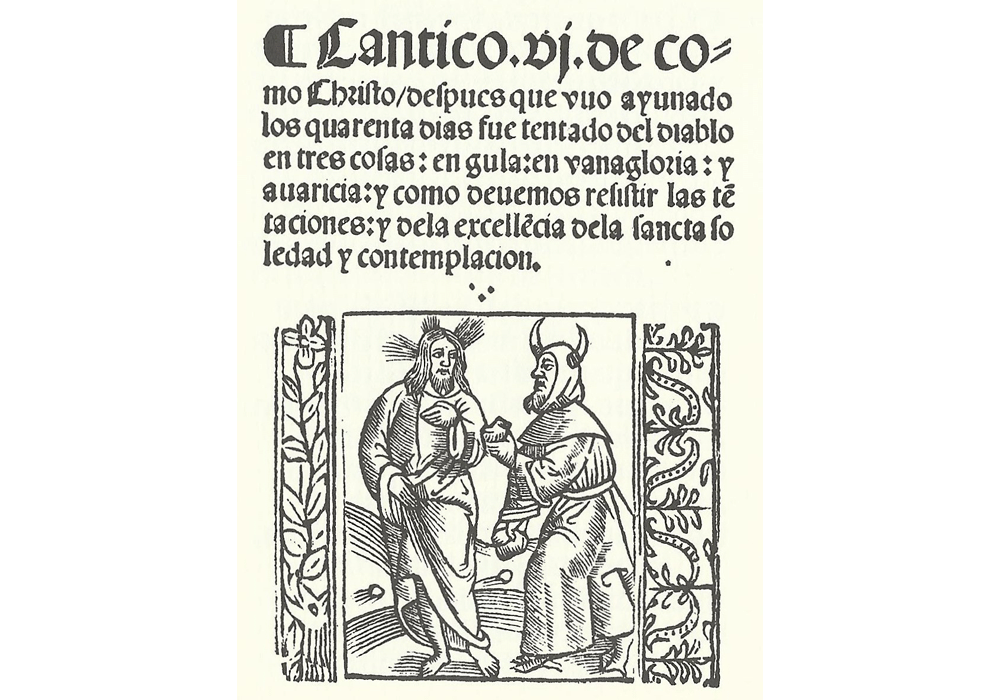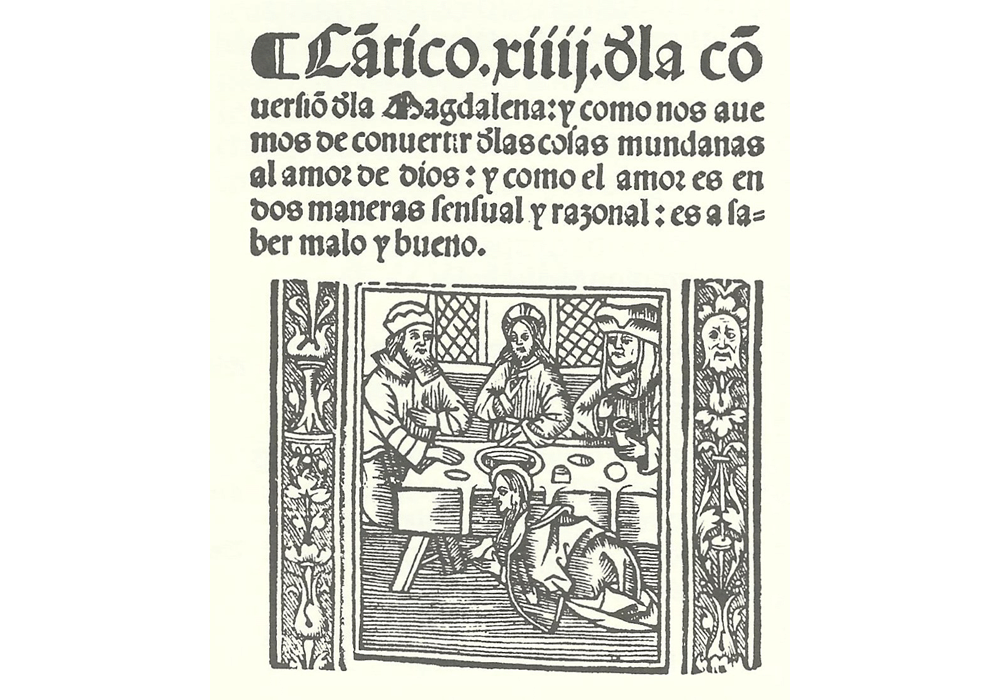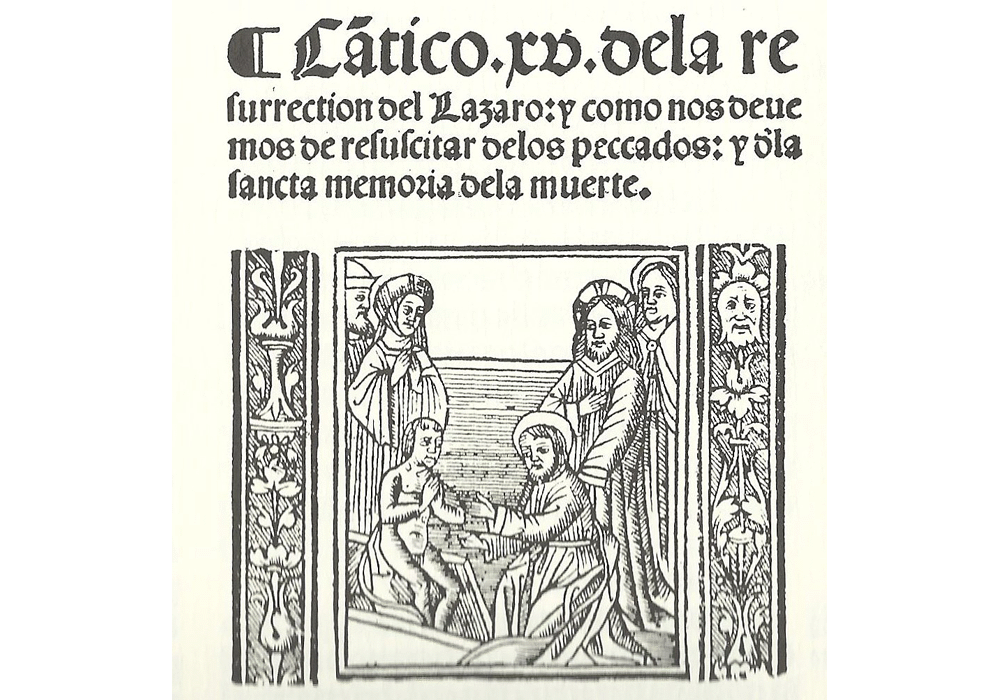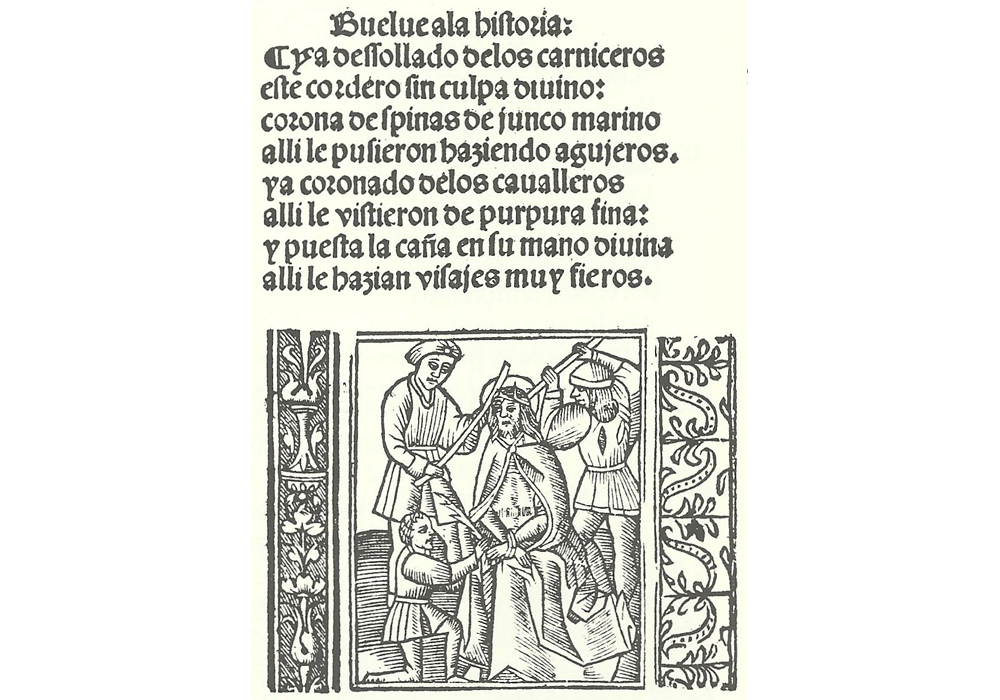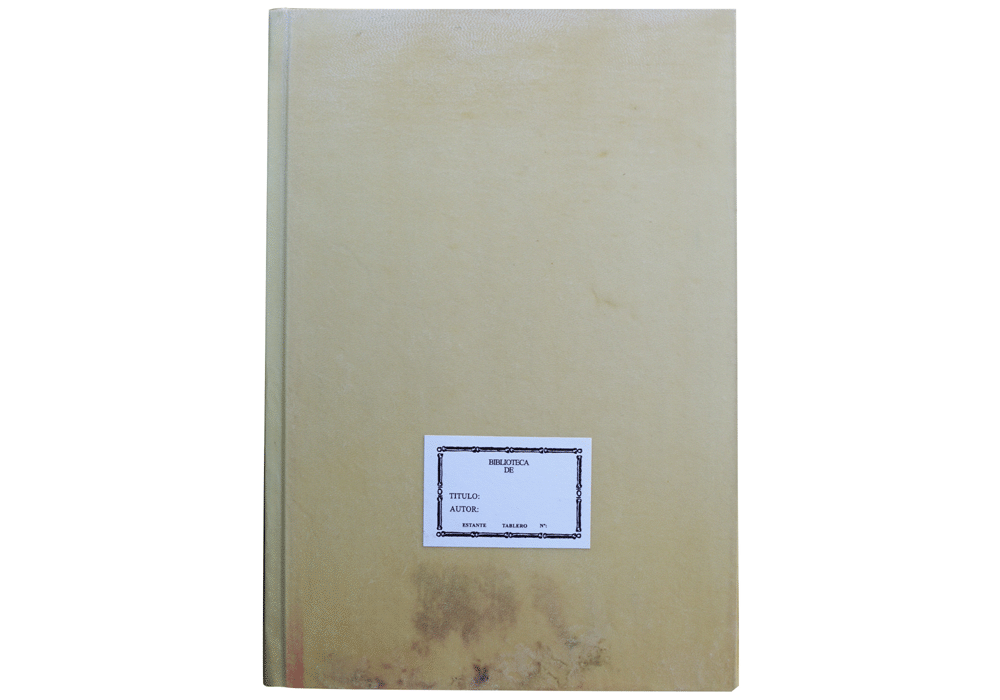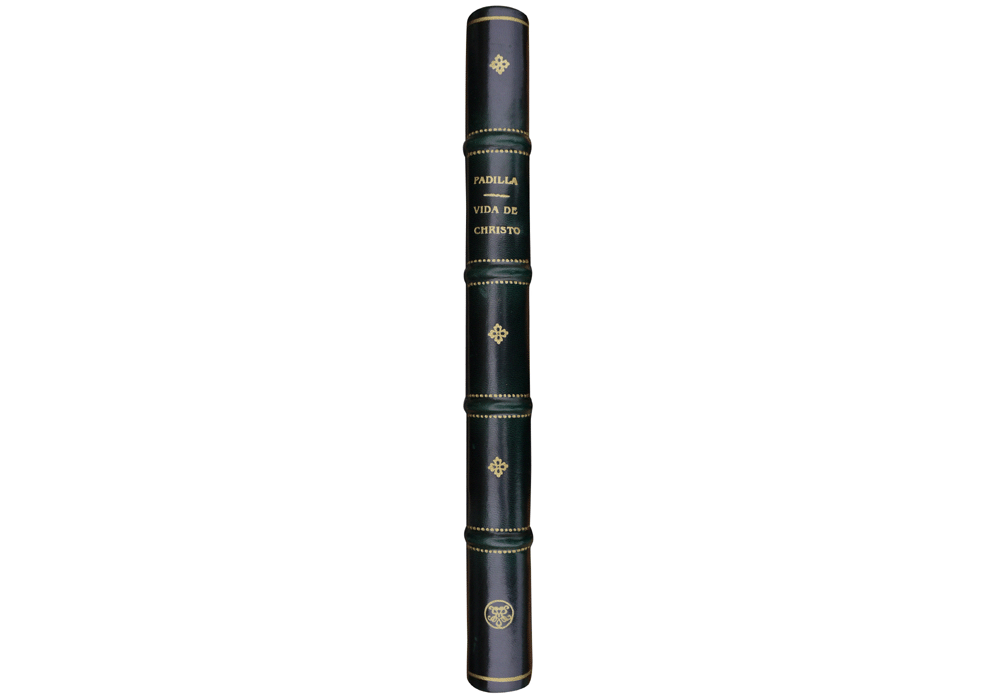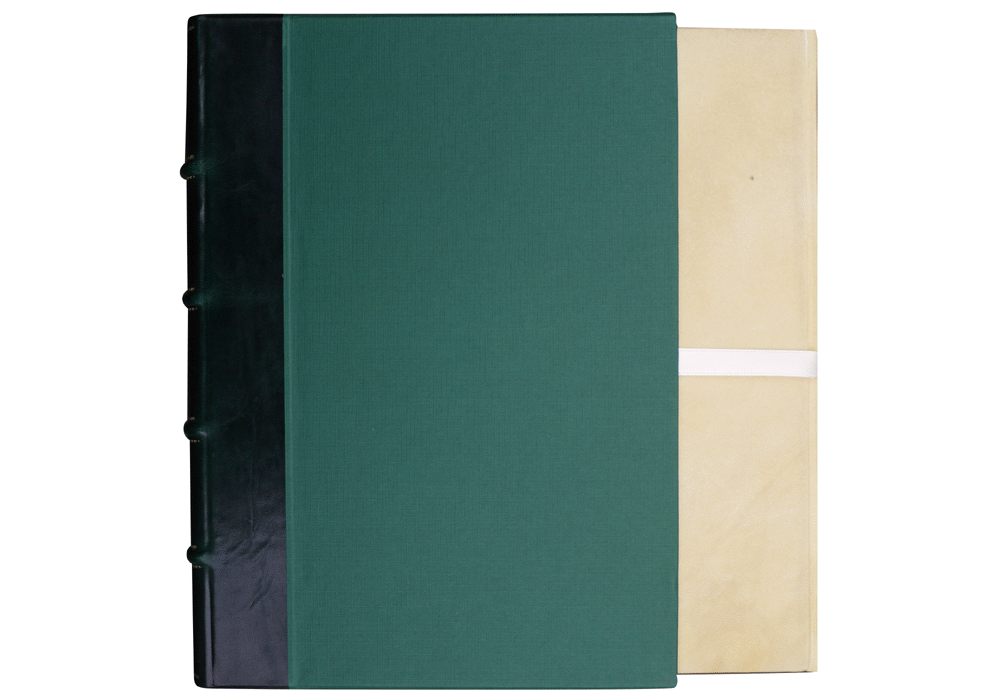|
|
|
| Seguir @vicentgarciaedi Twittear |
|
vgesa |

|
|
|
Synopsis: The life of Christ, 'written by a religious monk of the Cartujan order, in Castilian verses or Major Art couplets, whatever is best read', and remembered, without a doubt, as the quiet author reminds us (he even hides his name, however we know, nowadays, that his name was Juan Padilla, from Seville) 'as Aristotle said, men naturally enjoy verse and music'. In a few sentences, the author has told us the contents, the shape, the reason behind his choice and the objective followed. However it's about verses, there are several side apostilles in order to authorise the poet's expressions and for preacher's use. Each song concludes with a prayer and, in general, it is accompanied by a small image related to it, between two xylographic vertical parts. Some of the images are repeated, as the workshop did not have enough xylographical woodens to be able to illustrate every scene narrated in these verses. The ink result is pleasant to the sight, because of the double column; the apostilles appear irregularly, the presence of a running title, the alternance of different sizes typescripts, the printed typographic signs.The title page displays four of those scenes, irregularly distributed: the Crucifixion and the Resurrection above the scenes of the Nativity and Jesus in Mary's arms, riding a donkey, with St Joseph walking alongside, in their flight to Egypt. Those four scenes, the title and the printing year occupy the inside space of an architectural structure, with the legend "Initium Sapientiae timor Domini".
|
IBIC Rating: |
||
|
AC History of art / art & design styles |
1D Europe
|
|



